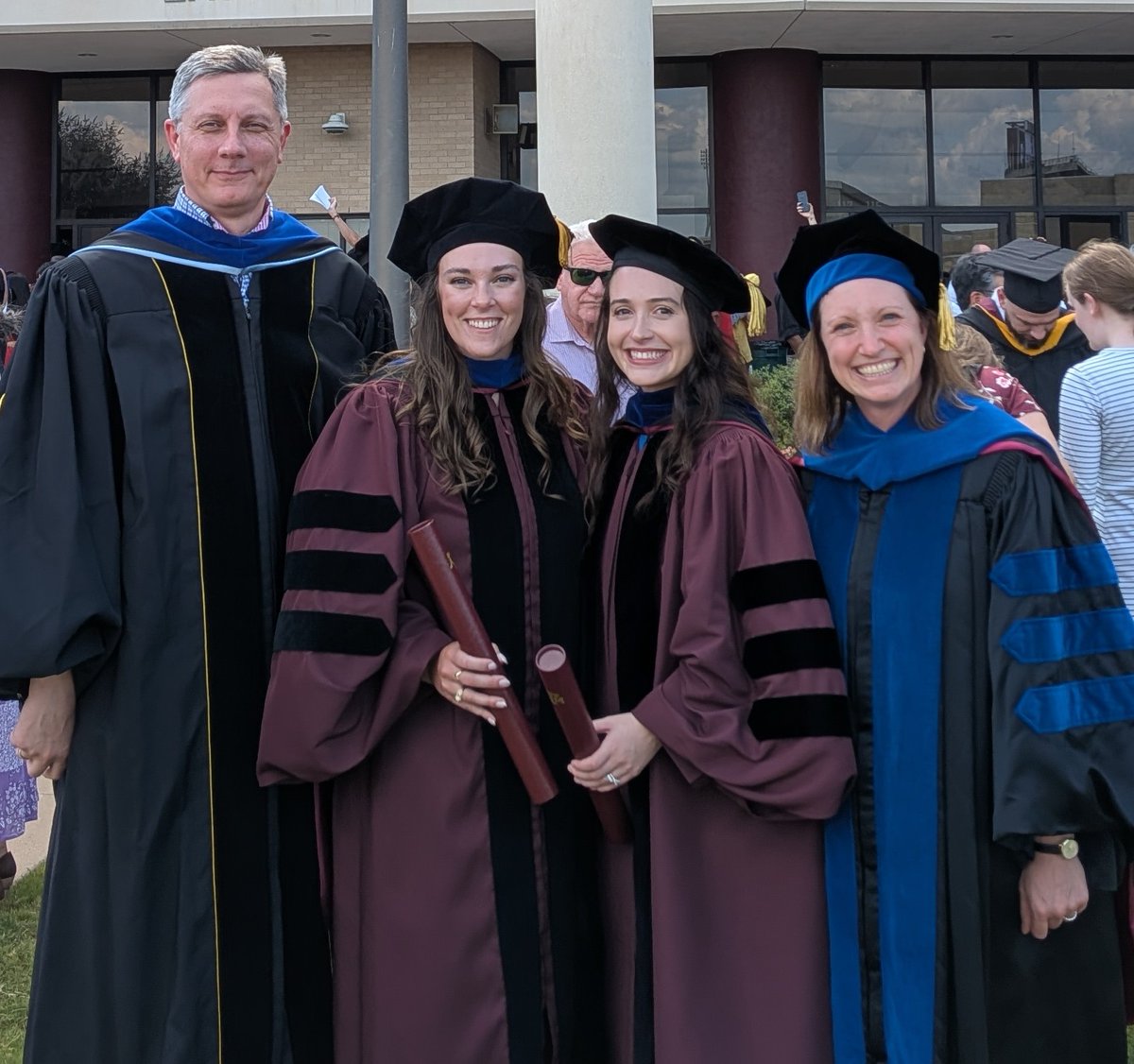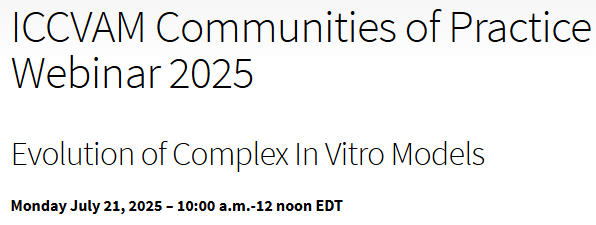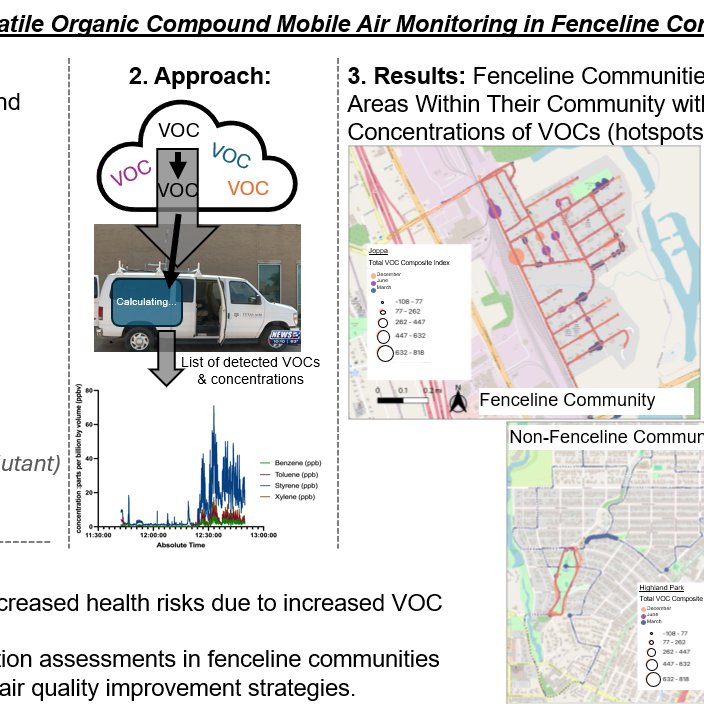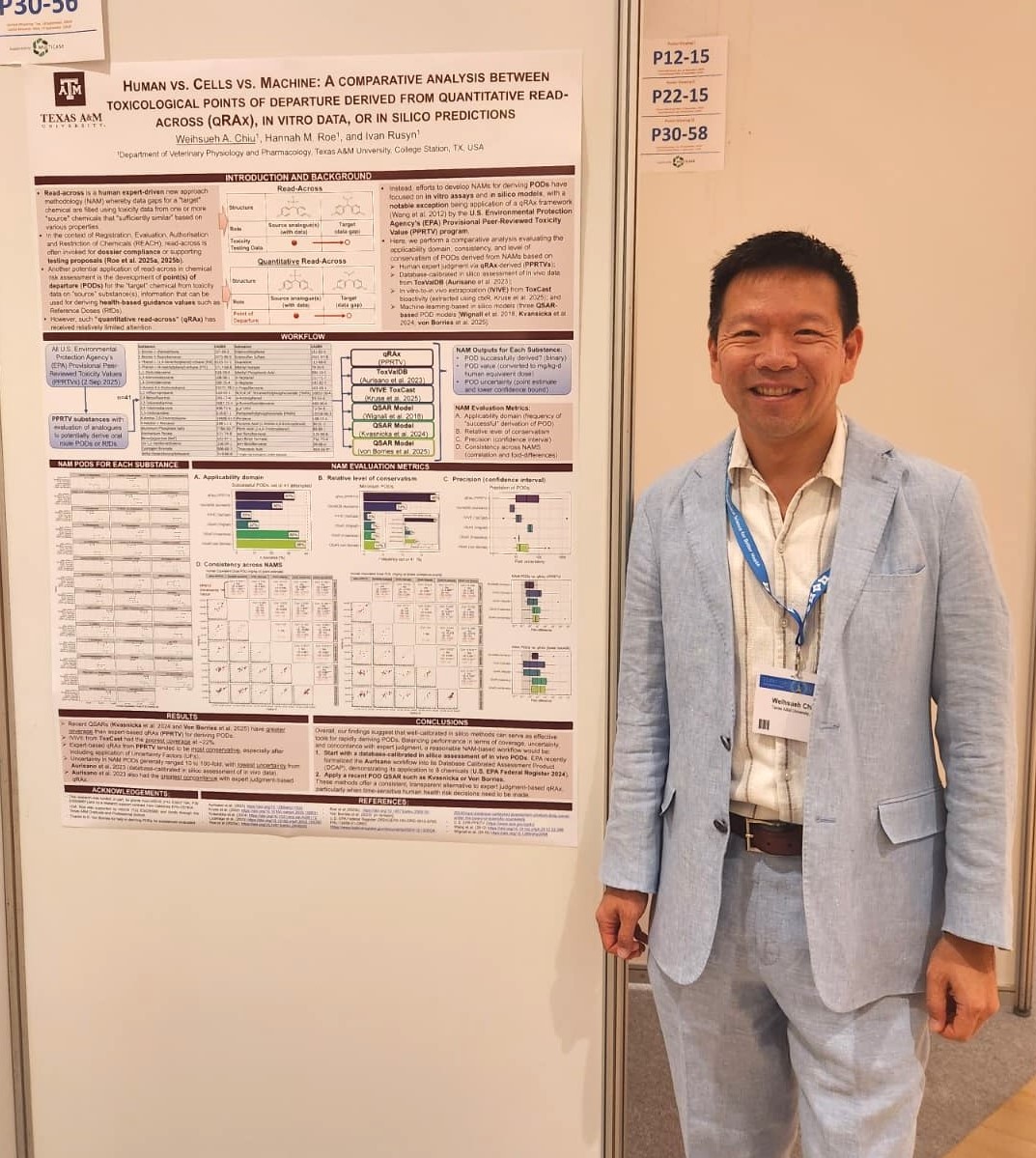CENTER OVERVIEW
The Texas A&M Superfund Research Center (Superfund Center) comprehensively evaluates the complexities of hazardous chemical exposures, potentially adverse health impacts, and potential hazards of exposures to complex mixtures through a series of multi-disciplinary projects focused on Disaster Research Response (DR2).
Natural and man-made disasters, and shifts in domestic economic activity, markedly increase the risks of catastrophic chemical contamination events resulting from weather-related or human-caused emergencies, increasing the risk of potential adverse health impacts.
LATEST NEWS
Texas A&M Superfund Center Develops Environmental Reporting Chatbot Prototype TAMU Vetmed News, February 2025
Texas A&M Superfund Research Center Trains Graduate Students in Community-Engaged Research, Helps Houston Residents Understand Science TAMU Vetmed News, December 2024
UTMB, TEXAS A&M Awarded $7.5M Grant To Establish Translational Center for Women’s Health Research. TAMU Vetmed News, June 2024
Using Spatial Analytics to Address Flooding and Contamination in Affected Communities. NIEHS 2024 Grantee Highlights, March 2024
Climate Vulnerability Index shows where action, resources are needed, TAMU Vetmed News, October 2023
Superfund Research Center trainees share “One Health” research initiatives, TAMU Vetmed News, August 2023
Southwest Regional Superfund Summit aims to strengthen data science collaborations, training, August 2023
Ohio train derailment, clean-up resulted in high levels of some gases, study shows, ACS, July 2023
Superfund Trainees Recieve Awards at the 2023 Society of Toxicology Annual Meeting, March 2023
Texas A&M researchers provide data context after Ohio train derailment, The Eagle, March 2023
High levels of chemicals could pose long-term risks at Ohio train derailment site, researchers say, CNN, February 2023
New study: East Palestine air pollutants show possible long-term health concerns, Cleveland19.com, February 2023
Air around East Palestine still has high chemical levels — but risk isn’t ‘imminent,’ researchers say, Politico, February 2023
Toxic air pollutants in East Palestine could pose long-term risks, researchers say, The Washington Post, February 2023
Texas A&M, Carnegie Mellon University researchers air testing with mobile lab in East Palestine, Ohio, WKBN.com, January 2023
Texas A&M Postdoc Receives NIH Grant For Toxicology Research, Texas A&M VMBS Communications, January 2023
Dr. Alan Valdiviezo’s (former Project 4 Trainee) recent publication was featured in the NIEHS Environmental Factor Newsletter as a Paper of the Month, NIEHS Environmental Factor, January 2023
Meet @TAMUSuperfund & @NCSU DMAC trainee, Zhuolin (Charlie) Song — featured in the #ToxSci Spotlight https://tinyurl.com/mup849ek and first author on the latest Toxicological Sciences article! 👏
📄 Read it here: https://doi.org/10.1093/toxsci/kfaf116 @NIH_NIEHS @tamutox @tamuvetmed
Excellent piece by @tamusuperfund Dr. Ivan Rusyn on why academic research must align with real-world regulatory needs. A must-read on improving toxicology’s impact by embracing #contextofuse & #fitforpurpose thinking. @NIH_NIEHS @tamutox @tamuvetmed #SRP https://doi.org/10.1093/toxsci/kfaf058
🎉 @tamusuperfund Dr. Phillips honored with Faculty Excellence in Mentoring Postdoctoral Scholars Award — a true testament to his dedication. As postdoc Johnson Oladele presented an exciting poster on PFAS exposure & clay-based detox solutions. 👏 @NIH_NIEHS @tamutox @tamuvetmed
@tamusuperfund celebrates post-doc Dr. Eva Vitucci, awarded 1st place in the 9th Annual TAMU Postdoc Res Symposium Flash Talk Competition!👏"The Application of Non-Targeted, Volatile Organic Compound Mobile Air Monitoring in Fenceline Communities"@NIH_NIEHS @TAMU_SPH @tamutox
@TAMUSuperfund was front & center at #EUROTOX2025! Dr. W. Chiu & trainee Hannah Roe shared their Superfund-funded research on tox & read-across — a powerful example of research translation in action & the global impact of #SRP science.🌍#NIEHS_SRP @NIH_NIEHS @tamutox @tamuvetmed
@tamusuperfund Center Director Dr. Ivan Rusyn attended 13th World Congress on Alternatives and Animal Use in Life Sciences in Rio de Janeiro to share his #Superfund work on population-based human cell models in toxicology. #NIEHS_SRP @NIH_NIEHS @tamuvetmed @tamutox
🎉 Congrats to the 6 @tamusuperfund poster winners from Proj 2, Proj 4 and CEC ! Each will receive a $750 travel award to present their @NIH_NIEHS research at a scientific conference. 👏🧪✈️ #NIEHS_SRP #ScienceCommunication #StudentSuccess @tamuvetmed @tamutox @TAMU_SPH
What a fantastic way to wrap up summer and kick off the Fall semester! 💥August @tamusuperfund monthly meeting full of exciting proj & core updates - an energized, collaborative group making Super Progress & and having Super Fun! @NIH_NIEHS @tamuvetmed @TAMUArchCollege @tamutox
🎻 By day, @tamusuperfund Dr. Weihsueh Chiu is a data science risk assessment expert—by night, a solo violinist! Awesome performance with the Brazos Civ Orchestra - Vivaldi’s Concerto for 4 Violins in B minor, Op. 3 No. 10 RV 580. #ScienceAndMusic @NIH_NIEHS @tamuvetmed @tamutox
@tamusuperfund & @TiCER_aggies leads the way in advancing environmental health research, building partnerships & preparing the next generation of One Health leaders. Full Article in VMBS Today: https://indd.adobe.com/view/73ac7059-cd8f-456e-aa26-7eec7c804bd1 @NIH_NIEHS @tamutox @TAMU_SPH @tamuvetmed @TAMUArchCollege
@tamusuperfund Project PI, Dr. Tim Phillips and his team, are "harnessing the power of nature to protect communities from environmental toxins through clay-based treatments." Full article in VMBS Today: https://indd.adobe.com/view/73ac7059-cd8f-456e-aa26-7eec7c804bd1 #NIEHS_SRP @NIH_NIEHS @tamutox @tamuvetmed
🎙️ Check out this podcast: @tamusuperfund Dr. Galen Newman, CEC PI & @TAMUArchCollege LAUP Dept Head, shares a light-hearted look at his career journey, leadership style & his impactful solutions-research #floodresilience https://www.podbean.com/ew/pb-g2u6h-193fd17 @NIH_NIEHS #NIEHS_SRP @tamuvetmed
All business with a splash of fun: @tamusuperfund trainees Kaylyn Dinh presented (Milk Matters Session) & Maddie McFarland soaked in the science @ISExposureSci @ISEE_global 👏- they capped the day with Dr. Johnson at #GeorgiaAquarium @NIH_NIEHS #NIEHS_SRP @tamutox @TAMU_SPH
@tamusuperfund Dr. Natalie Johnson gave an engaging talk, 2025 @ISESGlobal @ISEEGlobal Joint Ann. Mtg in Atlanta, on integrated enviro monitoring & health risk assessment post E Palestine derailment. Great insights! #ISES2025 #NIEHS_SRP @NIH_NIEHS @TAMU_SPH @tamutox @tamuvetmed
We couldn't be prouder of these amazing @tamusuperfund trainees. And to top it all off - Haley is joining @ToxStrategies and Mariana is off to @TCEQ, both diving into their #Toxicology careers. 👏 @NIH_NIEHS #NIEHS_SRP @tamuvetmed @tamutox @TAMU_SPH

@tamusuperfund celebrates trainees, Dr Haley Moyer and Dr Mariana Saitas, along with their mentors Drs. Rusyn & Johnson. Today is their BIG day. 👏👏 Happy PhDs. #doctoralgraduation @NIH_NIEHS @tamutox @tamuvetmed #Niehs_srp
@TAMU_SPH
@tamusuperfund celebrates trainees, Dr Haley Moyer and Dr Mariana Saitas, along with their mentors Drs. Rusyn & Johnson. Today is their BIG day. 👏👏 Happy PhDs. #doctoralgraduation @NIH_NIEHS @tamutox @tamuvetmed #Niehs_srp
@TAMU_SPH
@tamusuperfund Congratulates CEC trainee Jiang Zheng, PI on new NSF/NHC grant! He credits his Disaster Research Training for shaping his work - he'll be assessing #floodrisk to improve safety, planning, and policy nationwide. 👏 @NIH_NIEHS @tamuvetmed @TAMUArchCollege
Join us at Texas A&M for the @tamusuperfund Disaster Research Training Workshop — connect, learn, and prepare for real-world impact.
🔗Register here: https://tx.ag/DisasterWorkshop
#DisasterTraining #EmergencyPreparedness @NIH_NIEHS @tamuvetmed @tamutox @TAMU_SPH
@tamusuperfund Dr. Galen Newman awarded the 2025 #EDRA Certificate of Res. Excellence - groundbreaking, practice-based research that’s shaping the future of environmental design. Innovation+impact=excellence! 🌍✨#DesignResearch @NIH_NIEHS #NIEHS_SRP @TAMUArchCollege @tamuvetmed
Meet @tamusuperfund post-doc trainee, Dr. Johnson Oladele! He's tackling #pollution with plant-based solutions to clean our soil, water, and air. 🍃 Read his inspiring spotlight on #biochemistry, #toxicology & #environmentalhealth. @NIH_NIEHS #NIEHS_SRP @tamuvetmed @tamutox
🚨Trainee Spotlight. Meet @TAMUSuperfund superstar trainee Kayla Morales! 🌿A 2nd-year PhD student using #CEC in a toxicological framework to develop tools and strengthen #communityresilience & environmental health. 🔬 💡🧪@NIH_NIEHS #NEHS_SRP @TAMU_SPH @tamuvetmed
Meet @TAMUSuperfund trainee Zhenhang Cai✨
researching #GreenInfrastructure & urban #digitaltwins - advancing solutions to support #communityresilience. Here's her own awesome Spotlight—fun facts included! #UrbanPlanning @NIH_NIEHS @TAMUArchCollege @tamuvetmed @Tamuarch
So glad to see Senate Interior-Environment Appropriations Subcommittee recognize that "closure of [EPA] ORD" would result in “the immeasurable risk to our health and environment” by reducing EPA's capacity to clean up chemicals and respond to disasters

Senate spending bills take Trump to task
The Senate Appropriations Committee released its fiscal 2026 Interior-Environment and Transportation bills Thursday.
www.eenews.net
:
🎉 Huge congrats to @tamusuperfund Proj 2 superstar trainee Olivia Lampe — just married! 💍💐 Wishing Olivia and Luke a lifetime of love and laughter! 🥂💖 #JustMarried #Proj2Celebration @tamutox
@TAMU_SPH
@tamuvetmed
@tamusuperfund Center Dir. Drs. Rusyn & Chiu are visiting with the members of Congress to express their concerns re: potential cuts to the federal science workforce and research programs. America cannot lose its leadership in science! @NIH_NIEHS @tamutox @tamuvetmed #NIEHS_SRP
@tamusuperfund Center Dir. Dr. Ivan Rusyn presents an Overview of the TEX-VAL Consortium for validation and qualification of MPS, webinar organized on behalf of #ICCVAM by #NICEATM. Hear about current status/realities of complex in vitro models. @NIH_NIEHS @tamutox @tamuvetmed

Join the #ICCVAM Community of Practice free webinar on Monday, July 21, 2025 (10 AM–12 PM EDT) "Evolution of Complex In Vitro Models", @tamusuperfund Dr. Ivan Rusyn will present on TEX-VAL Consortium's MPS validation. https://tinyurl.com/ICCVAM-COP @NIH_NIEHS @tamuvetmed @tamutox
@tamusuperfund and @TAMU_SPH CEC Dr. Garett Sansom's recent scientific publication found a significant positive association between community cohesion and perceived resilience. doi: 10.1017/dmp.2025.10119 @NIH_NIEHS #NIEHS_SRP @tamuvetmed
NIH-supported @TAMUSPH Superfund Center is dedicated to developing tools and models for understanding health risks posed to populations following emergencies and disasters and swill deploy surveys in Kerr County after search and rescue operations conclude. 🧵 3/4
@tamusuperfund trainees Jiang Zheng & Ruby Hernandez -front and center at the #NaturalHazards, presenting their model for evidence-based insights to guide policy, zoning, & community action. 👏 abstract: https://tinyurl.com/3rc4rk9h @TAMUArchCollege @TAMU_SPH @tamuvetmed @NIH_NIEHS
Join the #ICCVAM Community of Practice free webinar on Monday, July 21, 2025 (10 AM–12 PM EDT) "Evolution of Complex In Vitro Models", @tamusuperfund Dr. Ivan Rusyn will present on TEX-VAL Consortium's MPS validation. https://tinyurl.com/ICCVAM-COP @NIH_NIEHS @tamuvetmed @tamutox
Meet @tamusuperfund trainee Allison Fry from UNC & @BakerLabMS — she took the spotlight into her own hands & made it shine, showcasing her research in computational analytical chemistry and why it matters! 🧪#WomenInSTEM #SuperfundScience #IMSMS @NIH_NIEHS #NIEHS_SRP @tamuvetmed




































